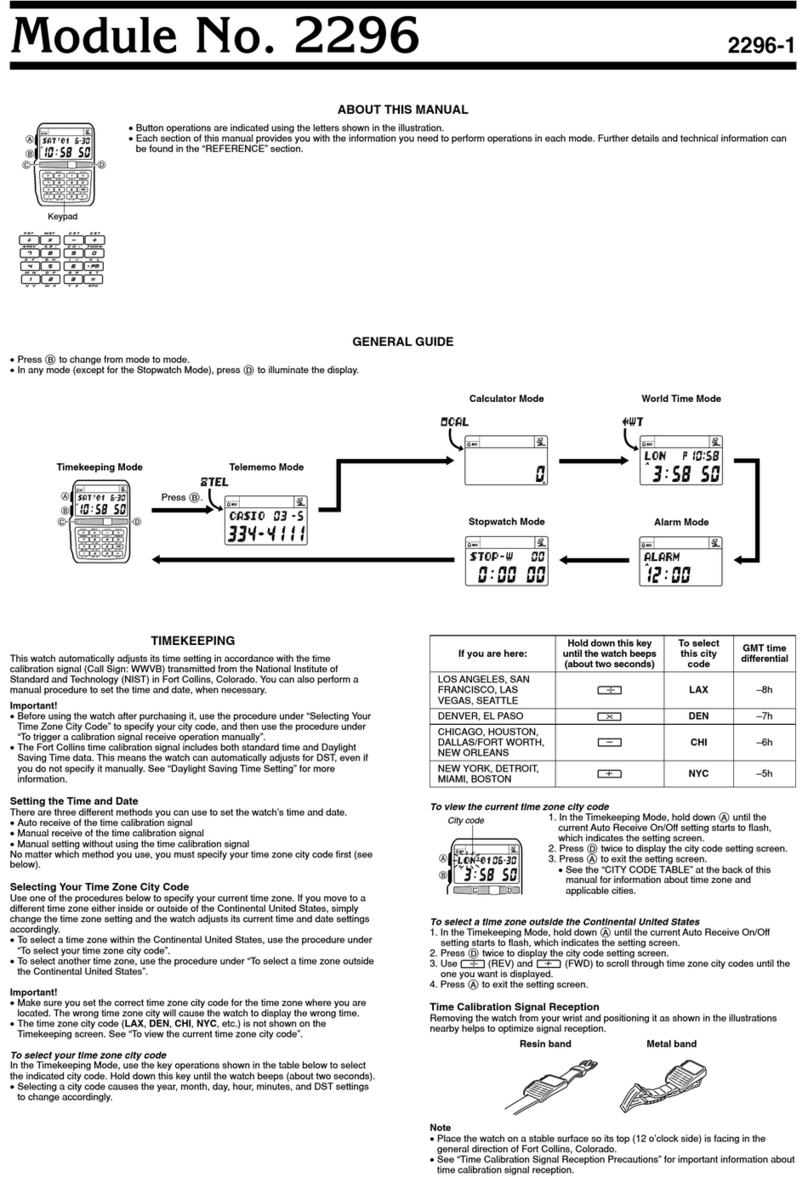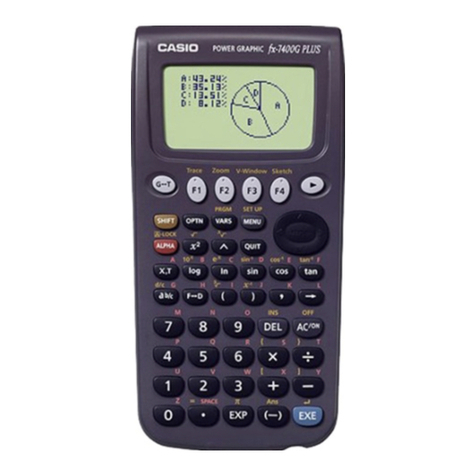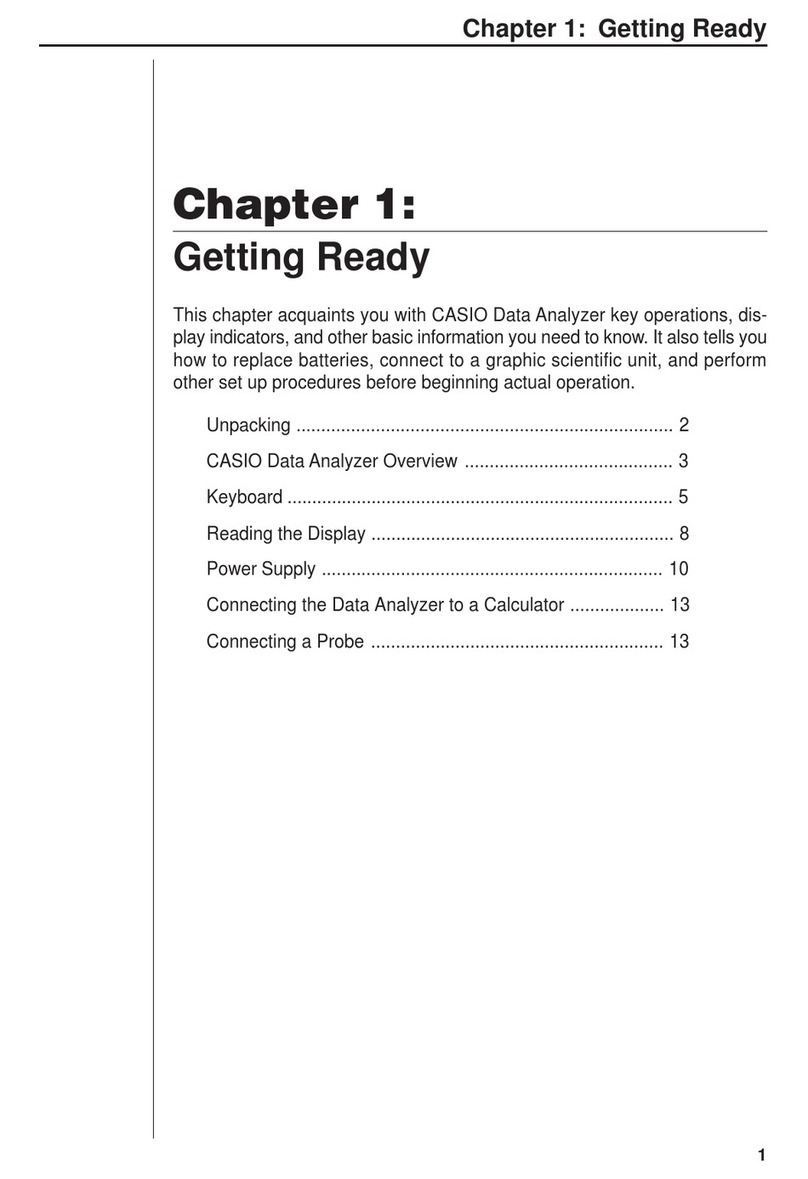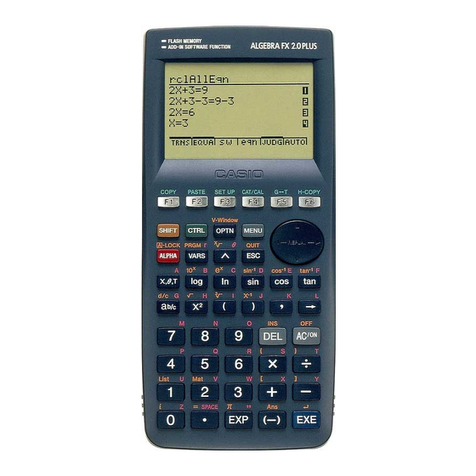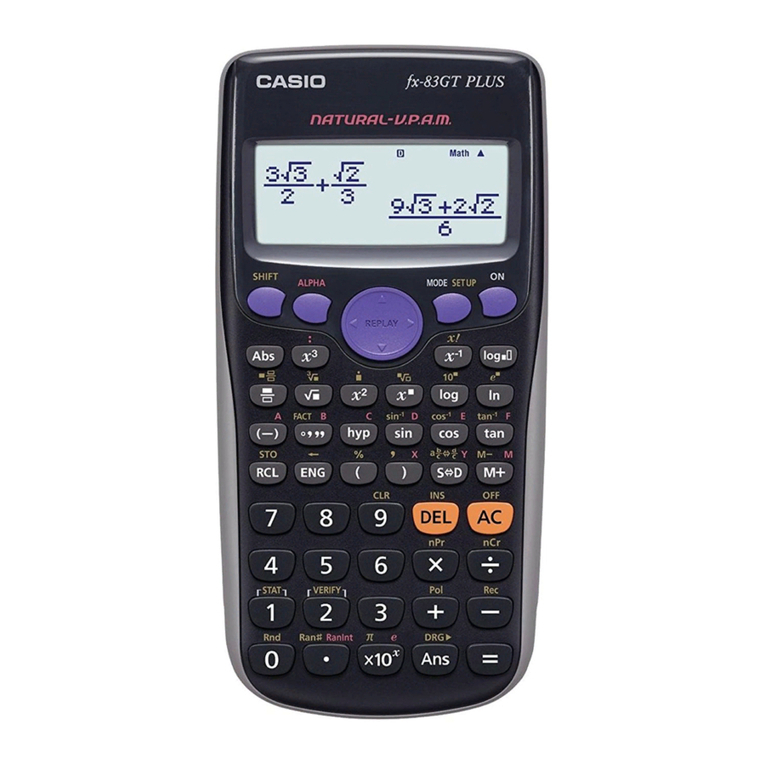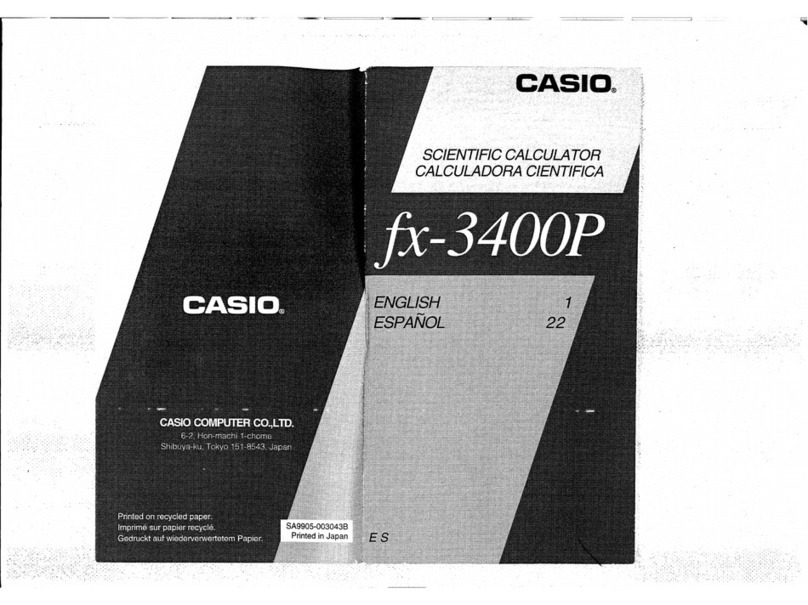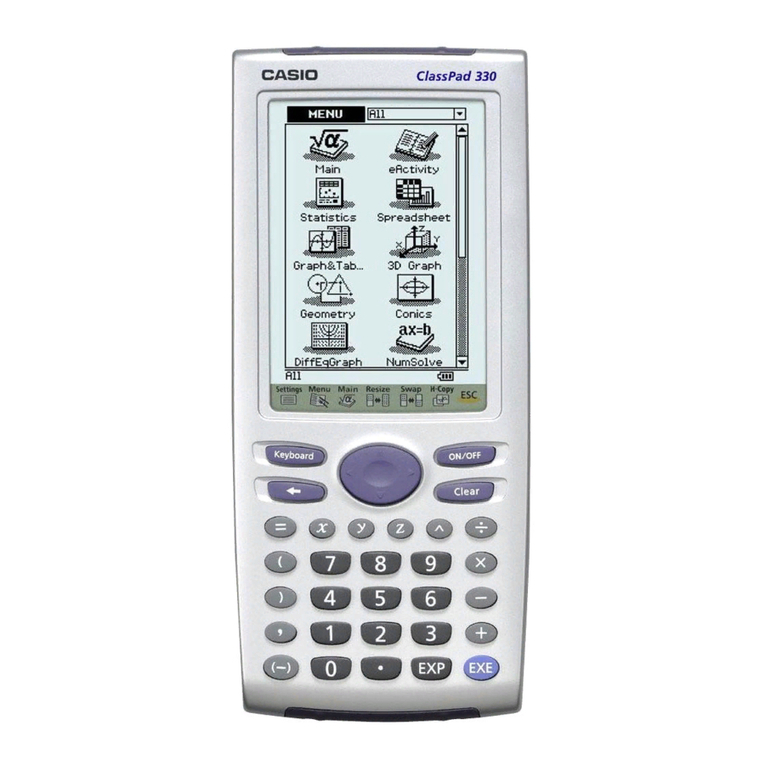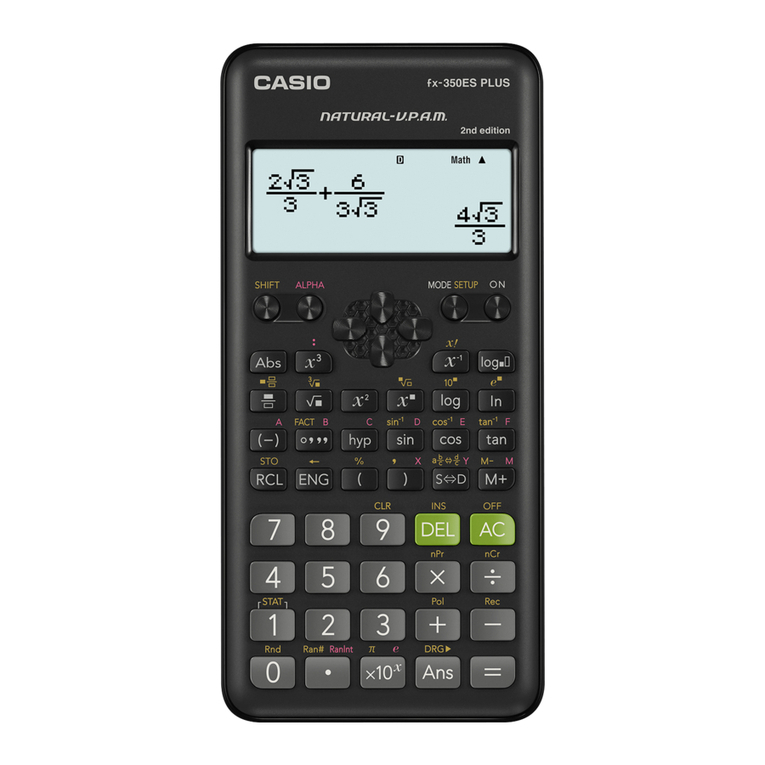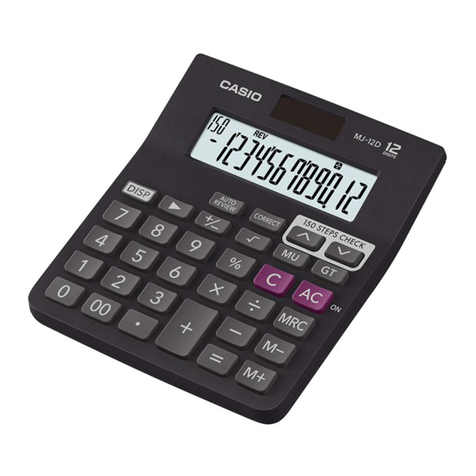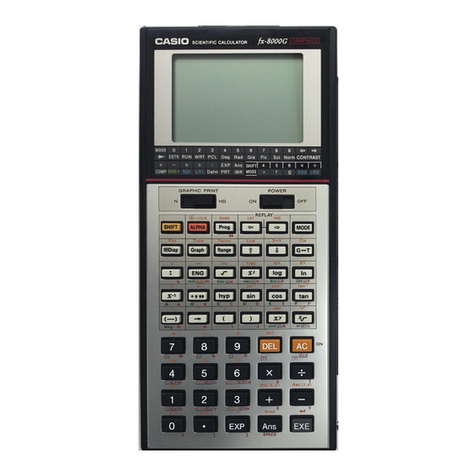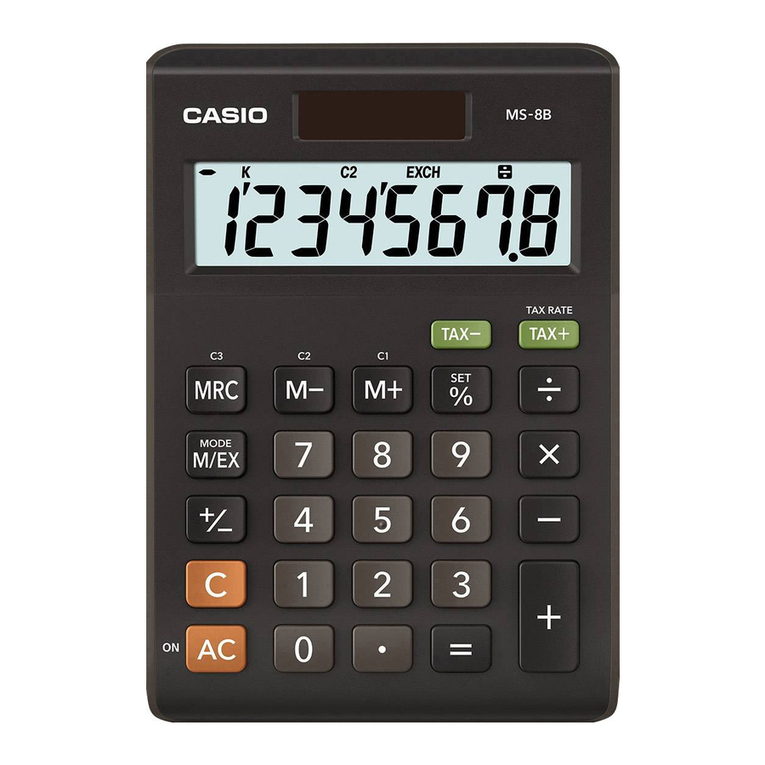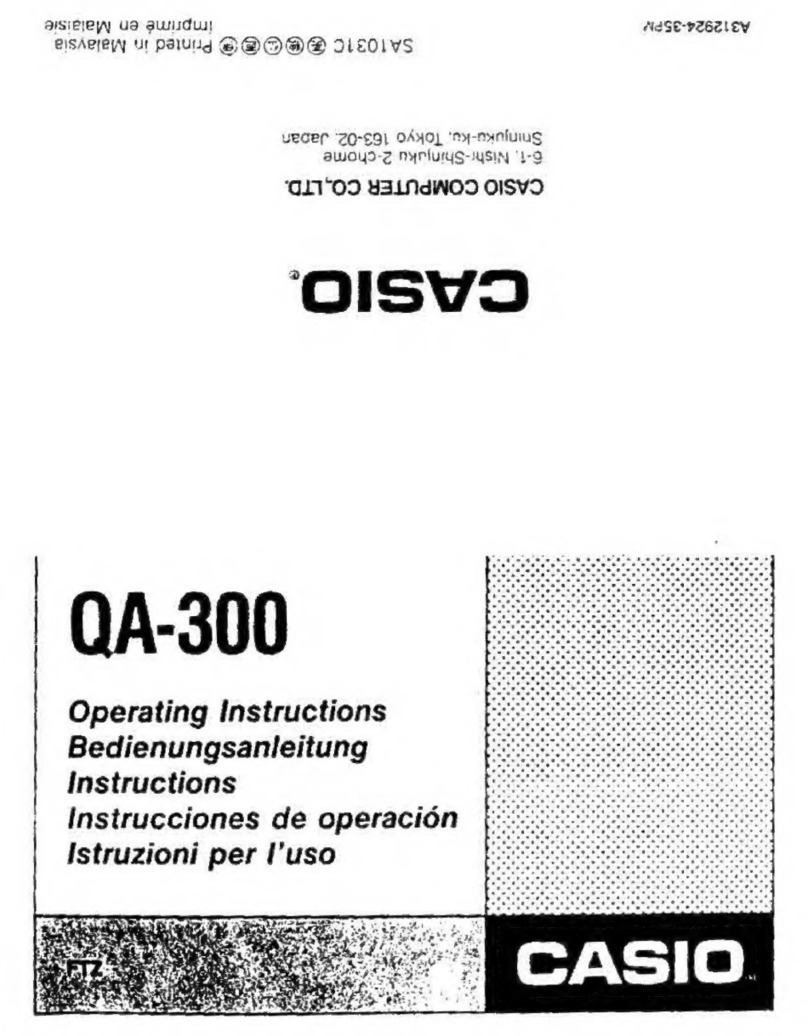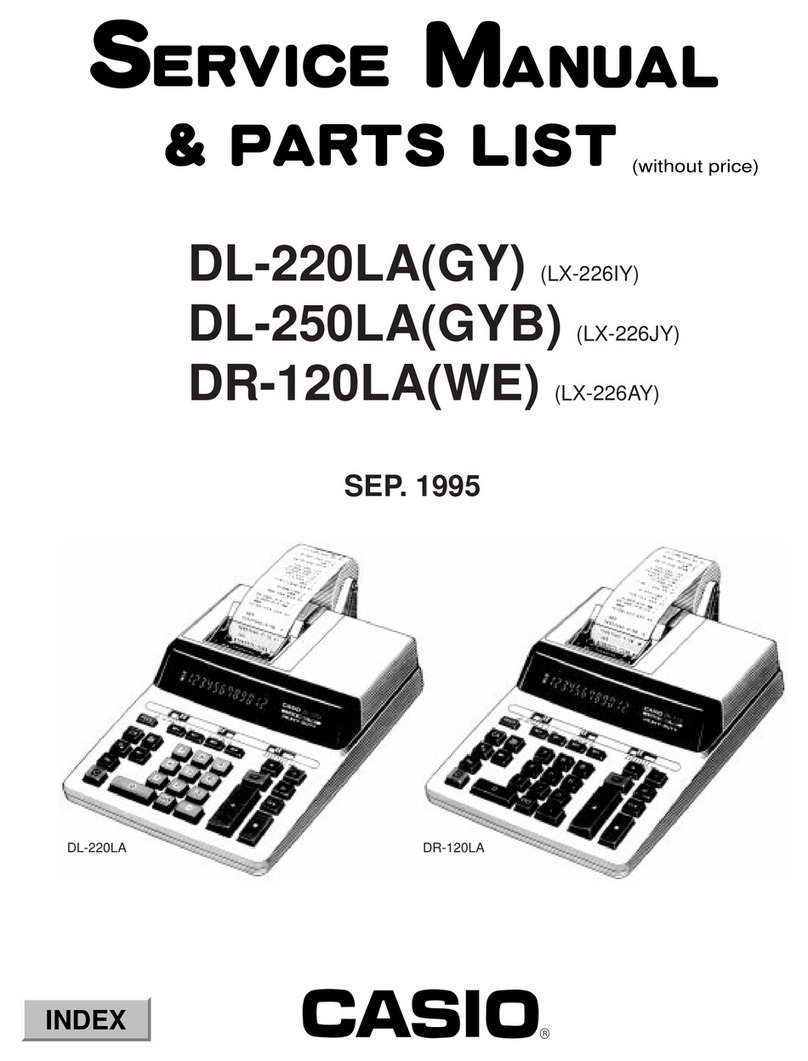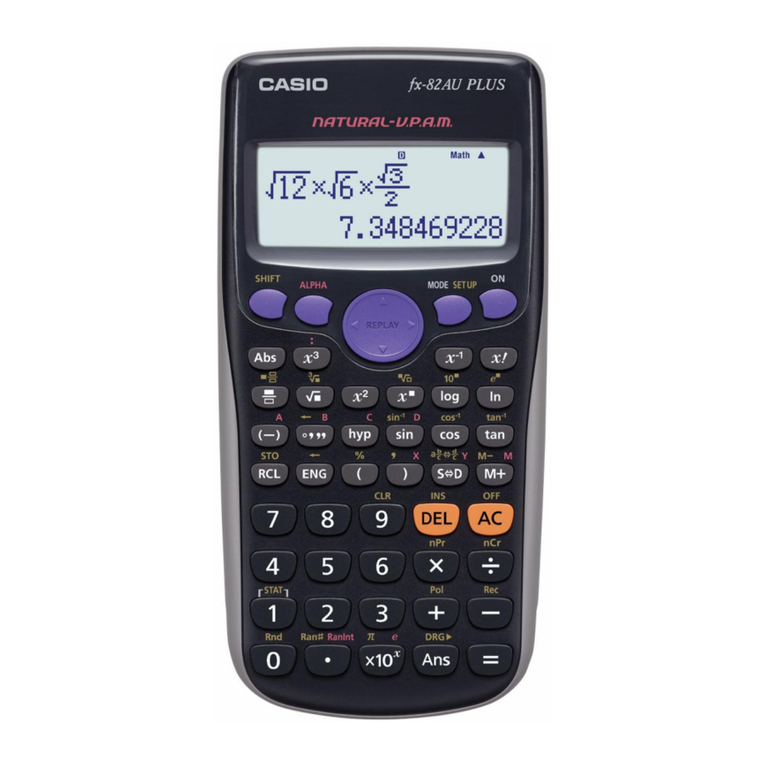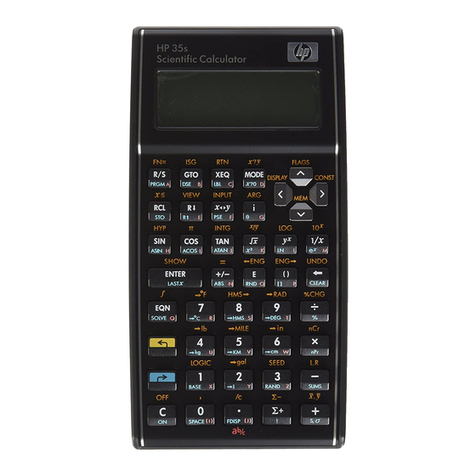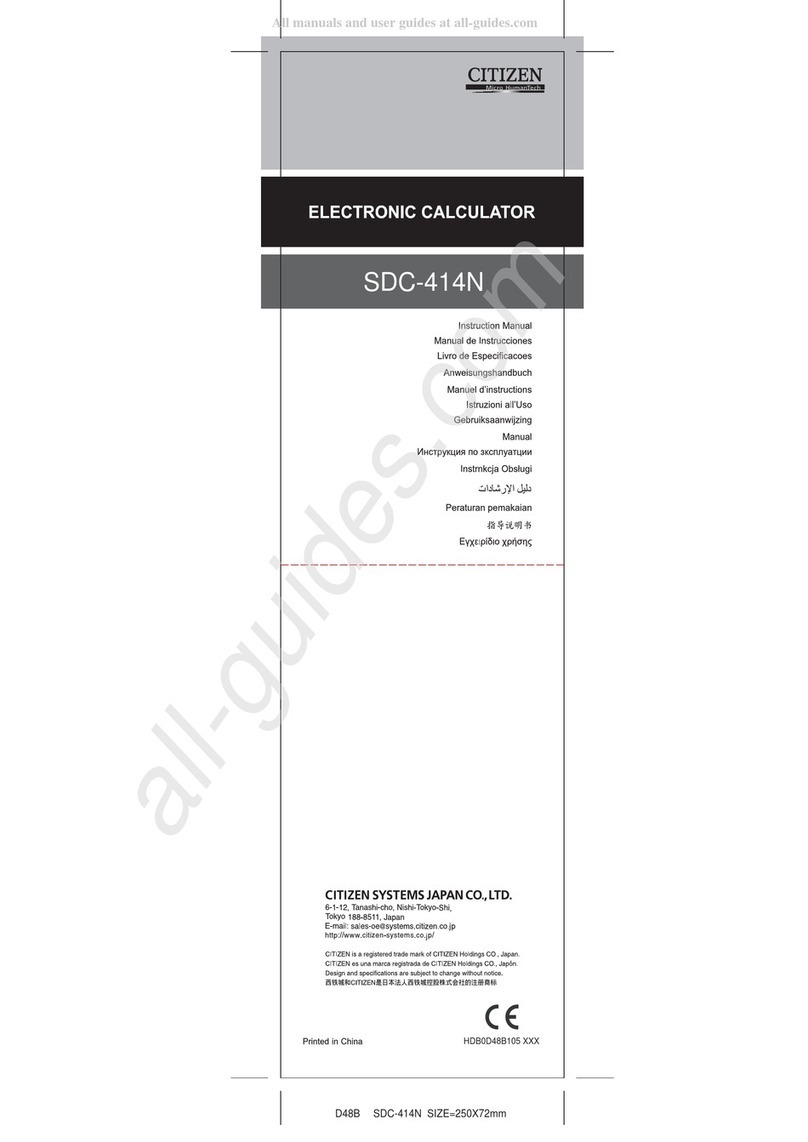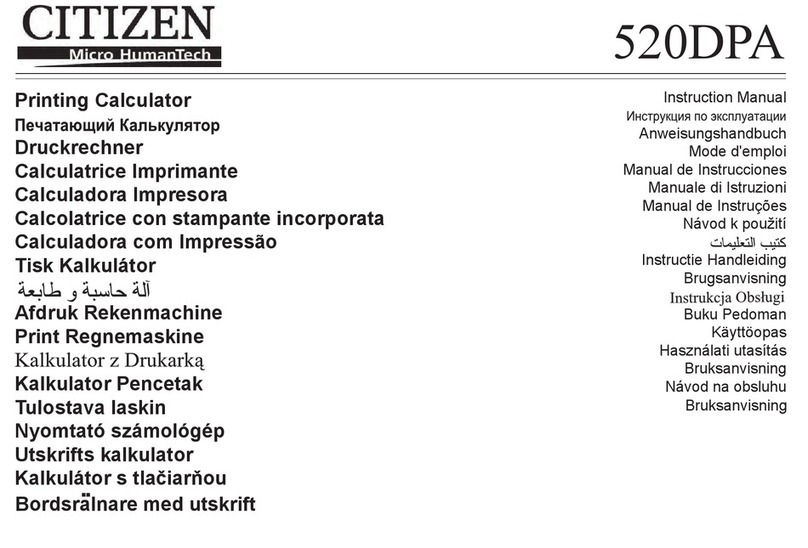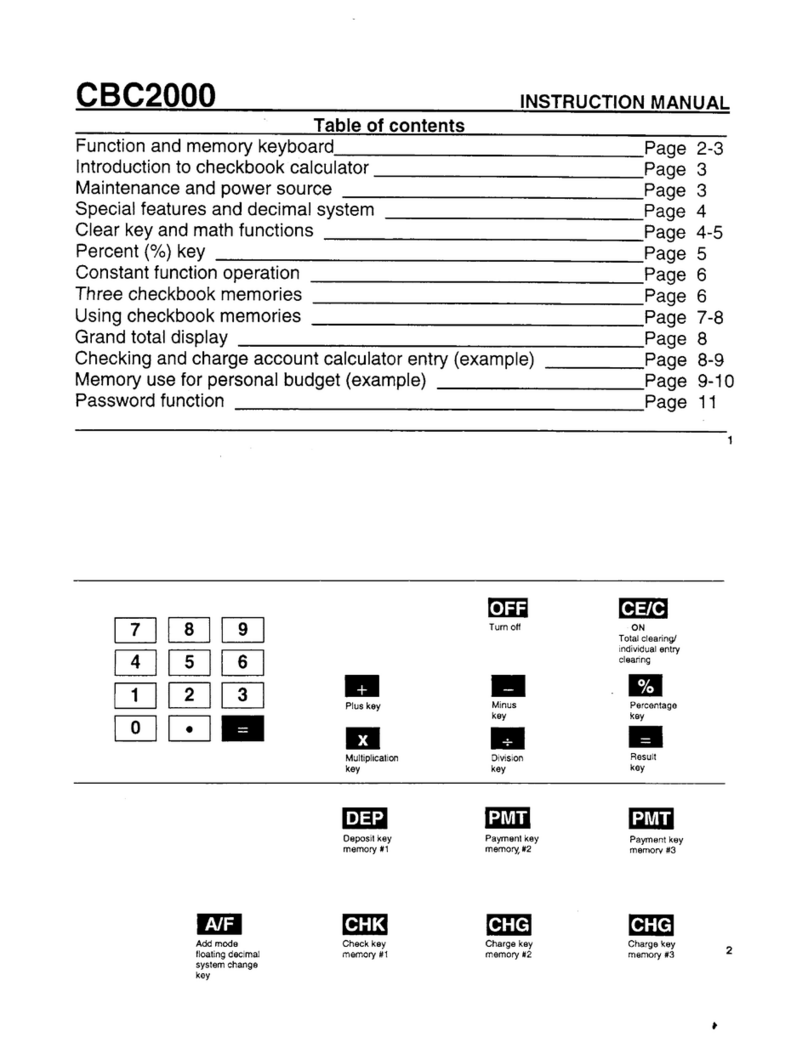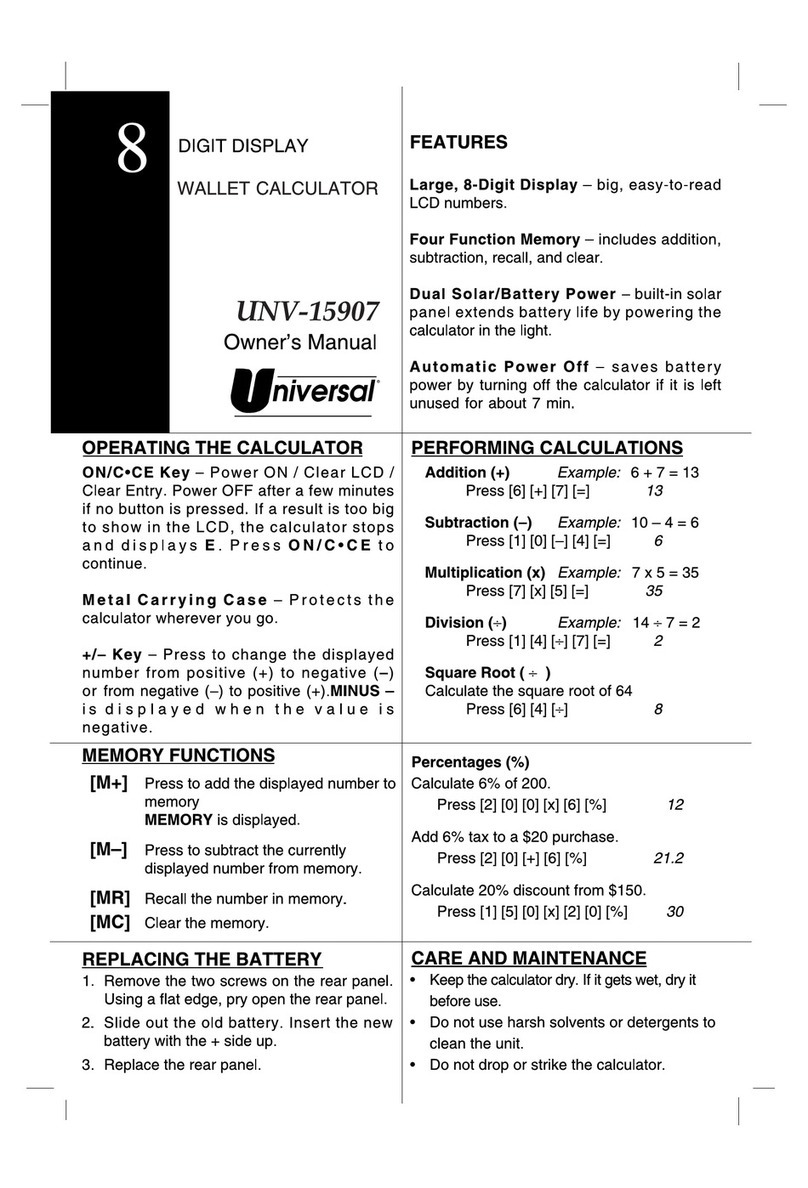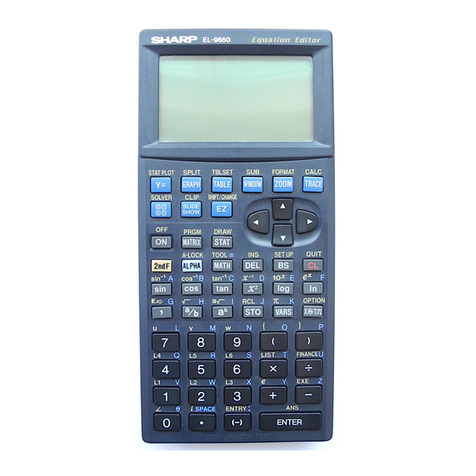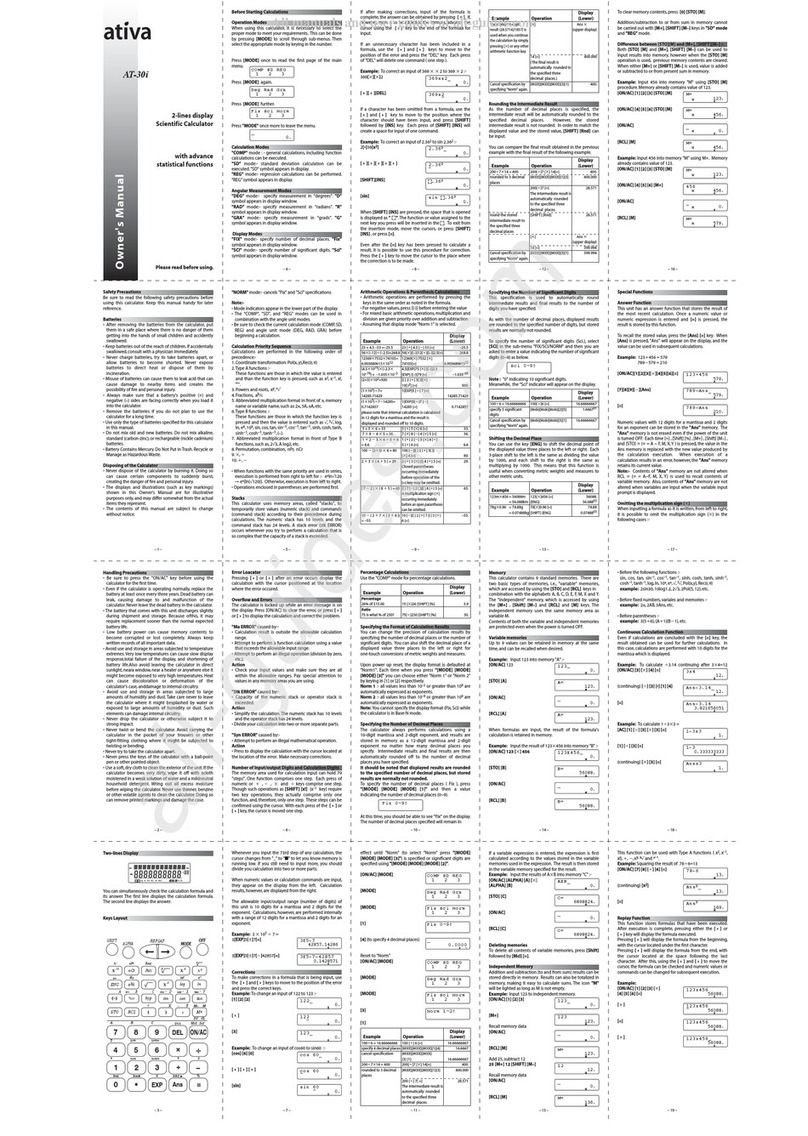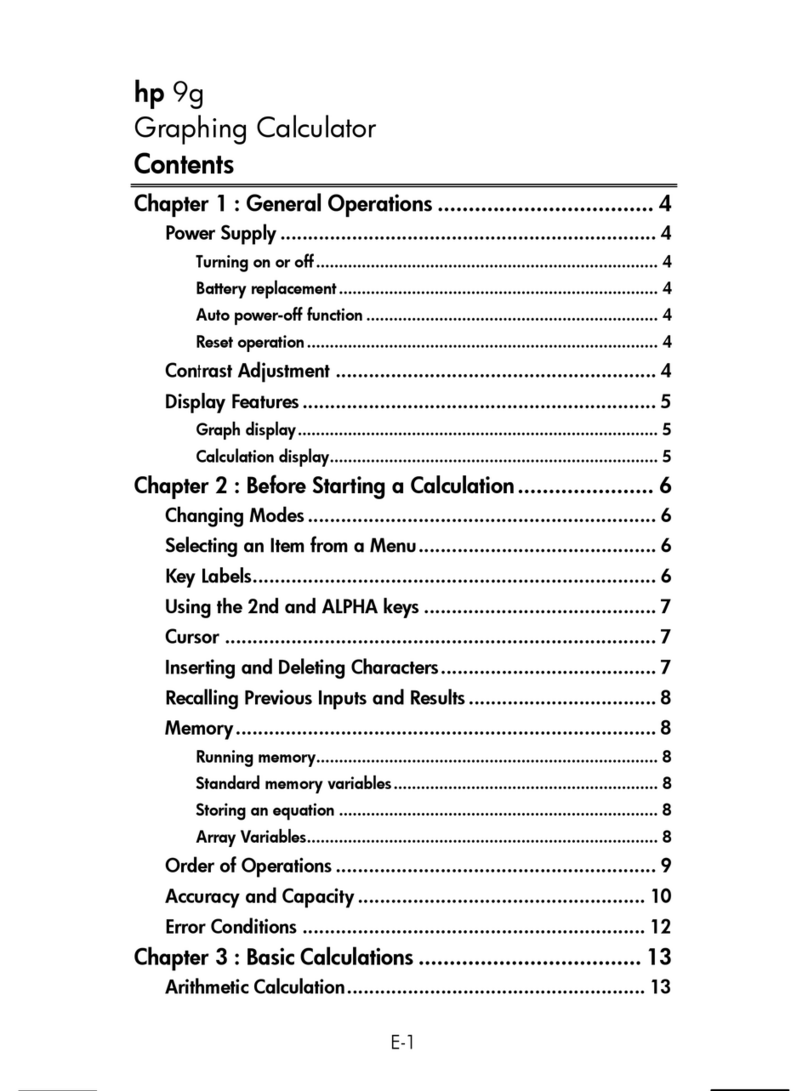
E-7
Initializing Calculator Settings
Perform the following procedure to initialize the calculator, which returns the
calculation mode to COMP and returns all other settings, including setup
menu settings, to their initial defaults.
19(CLR)1(Setup)=(Yes)
Inputting Expressions and Values
Basic Input Rules
Calculations can be input in the same form as they are written. When you
press =the priority sequence of the input calculation will be evaluated
automatically and the result will appear on the display.
4 × sin30 × (30 + 10 × 3) = 120
4 *s30 )*( 30 +10 *3 )=
*
1
*
2
*
3
*
1
Input of the closing parenthesis is required for sin, sinh, and other functions
that include parentheses.
*
2
These multiplication symbols (×) can be omitted. A multiplication symbol
can be omitted when it occurs immediately before an opening parenthesis,
immediately before sin or other function that includes parentheses,
immediately before the Ran# (random number) function, or immediately
before a variable (A, B, C, D, E, F, M, X, Y), scientific constants, π or
e.
*
3
The closing parenthesis immediately before the =operation can be
omitted.
Input example omitting **
2
and )*
3
operations in the above
example.
4 s30 )( 30 +10 *3 =
Note: • If the calculation becomes longer than the screen width during
input, the screen will scroll automatically to the right and the ]indicator will
appear on the display. When this happens, you can scroll back to the left by
using dand eto move the cursor. • When Linear Display is selected,
pressing fwill cause the cursor to jump to the beginning of the calculation,
while cwill jump to the end. • When Natural Display is selected, pressing
ewhile the cursor is at the end of the input calculation will cause it to jump
to the beginning, while pressing dwhile the cursor is at the beginning will
cause it to jump to the end. • You can input up to 99 bytes for a calculation.
Each numeral, symbol, or function normally uses one byte. Some functions
require three to 13 bytes. • The cursor will change shape to kwhen there are
10 bytes or less of allowed input remaining. If this happens, end calculation
input and then press =.
Calculation Priority Sequence
The priority sequence of input calculations is evaluated in accordance with the
rules below. When the priority of two expressions is the same, the calculation
is performed from left to right.
MathMath
MathMath
